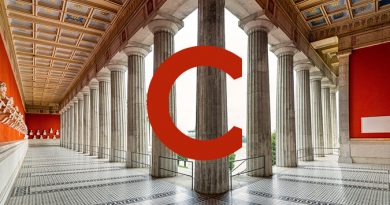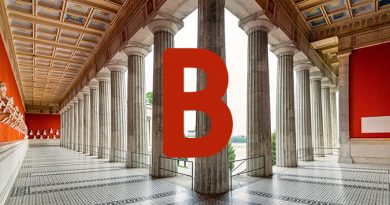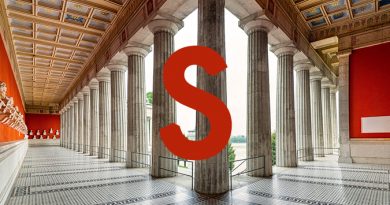R
James Ramsay Biscuit maker b. Dec. 16, 1866, Aberdeenshire, Scotland; d. Nov. 22, 1935, Vancouver. After running a stationery store in Scotland, he opened his first factory in Victoria in 1891. Six months later, he moved to Vancouver, opening Ramsay Bros. & Co., manufacturer of biscuits, candies and syrup. The factory moved from Keefer to Hastings to 998 Powell when the company bought out the four-storey Imperial Syrup Factory. His three brothers and one sister worked with him. Alderman (Ward 3) for seven years, serving as finance chair and acting-mayor. BC MLA (Vancouver) for four years, retiring due to ill health. Chair, Vancouver School Board for ten years; license commissioner for a year; library trustee for three years; president of the YMCA and on the board of Vancouver General Hospital. Also president of Canadian and B.C. Manufacturer’s Association and one of the oldest members of The Vancouver Board of Trade.
Sam (S.W.) Randall Thoroughbred race promoter b. Sept. 25, 1882, near Toronto, Ont.; d. Nov. 2, 1961, Vancouver. In 1908, left Toronto for Vancouver with wife Sarah Catharine (d. 1951). Worked for Canada Pride Range, a home appliance company. Two friends got him involved in racing; he took over Exhibition Park in 1920. Operated Lansdowne Park on Lulu Island (1924-45); managed Victoria’s Willows Track until 1947. For 35 years, president and director, Ascot Jockey Club and Vancouver Thoroughbred Association. First Canadian track owner to adopt photo finish; first western manager to install electric starting gate. Sold Lansdowne Park and Randall Building (535 W. Georgia) in 1945, reportedly for $1 million. Founder, S.W. Randall Plate. Inducted into B.C. and Canadian sports halls of fame.
Bill Rathie Mayor of Vancouver, 1963-66 See Mayors of Vancouver.
Francis Mawson Rattenbury Architect b. Oct. 11, 1867, Leeds, Eng.; d. March 28, 1935, Bournemouth, Eng. After arriving in B.C. in 1892, he designed Victoria’s Legislature Buildings. In 1901, named CPR western architect (to 1908). Designed the Empress Hotel, Crystal Garden, banks and mansions and, in Vancouver, the Courthouse (now Vancouver Art Gallery). In 1924, his affair with a 30-year younger mistress, Alma Victoria Clark Dolling Pakenham, led to being outcast by polite society. The couple moved to Bournemouth, Eng., where he was murdered. Alma and her lover George Stoner were charged. George was sentenced to life but later released, Alma committed suicide. Biblio: Rattenbury by Terry Reksten.
James A. Raymur Sawmill operator b. 1823, Halifax, NS; d. July 31, 1882, Victoria. Captain Raymur replaced Captain Stamp as manager of Hastings Mill in 1869. He tried to transform Hastings Mill into a model town. Astounded by its filth, he set out to clean up the wastes that had accumulated. “A devout, upright man, scornful of the excesses and haphazard ways of the pioneers.” On . 23, 1869, he built a meeting room and library for mill employees. In March, its name was changed to The Hastings Literary Institute after Rear Admiral Hastings.
Bill (William) Rea Jr. Radio pioneer b. Dec. 27, 1908, Edmonton, Alta.; d. April 4, 1983, Santa Barbara, Calif. Began radio career in Edmonton with children’s program; also aired a cooking program with his sister. In 1937, made commercial manager, CJAT, Trail, B.C. That same year, came to Vancouver, worked at CJOR and CKMO (later CFUN). Founded CKNW in New Westminster (1944). Known for his five-musician hillbilly band as leader, singer and bass player. At CKNW, launched Roving Mike interview and the Orphan Fund. Moved to California in 1954 due to health problems. Sold CKNW in 1955. Later bought KBBO and KBBY-FM in Ventura, Calif.
James Inglis Reid Butcher b. 1874, Scotland; d. Nov. 16, 1952, Vancouver. Came to Vancouver in 1906. His meat store at 559 Granville (opened 1915) sold Scottish specialties, including haggis. In 1917, his employee, Scottish immigrant H. Nelson Menzies, introduced Reid’s famous sausages. The shop’s slogan was “We hae meat, that ye can eat.” Charter member and president, Vancouver Scottish Society. In 1926, set up $25,000 fund for VGH as memorial to his teenaged son Knox who drowned off Bowen Island. The fund was used for therapeutic services for boys. His final estate was valued at $343,362.
Thomas Reid Politician b. April 18, 1886, Cambuslang, Scotland; d. Oct. 11, 1968, Surrey, B.C. Came to Canada in 1909 and farmed in Newton, B.C. Elected Surrey councillor (1922); Surrey reeve (1924-34). Twice head of Union of B.C. Municipalities. Lib. MP (New Westminster, 1930-49). Fought for railway freight reductions and natural resources issues. In 1937, helped form the Fisheries Commission, retiring as chair in 1967. Devoted to rehabilitation of Fraser salmon run. In 1958, as a result of his efforts, the run had its best year since 1905, with B.C. packing more than one million cases. Appointed to the Canadian senate (1949), becoming Canada’s only bagpipe-playing senator.
Henry Reifel Brewer b. April 2, 1869, Spiyer, Bavaria; d. Sept. 8, 1945, Vancouver. Emigrated to US in 1886, brewing in Portland and San Francisco. Came to Vancouver in 1888, began a brewery at Main and 16th on Brewery Creek. By 1908, built Canadian Brewing and Malting (11th and Yew), later amalgamating several companies into Vancouver Breweries (sold to Carling O’Keefe). Developed technique to produce malt from rice and opened Anglo-Japanese Brewing in Japan. He sold his brewing interests on retirement (1933). Donated property for the original Vancouver Art Gallery on Georgia.
George Conrad Reifel Brewmaster b. May 15, 1893, Vancouver; d. March 9, 1973, Vancouver. Eldest son of Henry Reifel, he was a New Westminster brewmaster and distiller. During Prohibition, he sailed his liquor down the coast. Brother Harry (Henry) Frederick (b. Dec. 3, 1895, Vancouver; d. July 20, 1973, Vancouver) raised purebred Jerseys in Milner, B.C. They built and owned Commodore Block on Granville (1929) and Vogue and Studio theatres in the 1940s. Grandson George Henry (b. July 22, 1922, Vancouver; d. March 7, 1992, Palm Desert, Calif.) farmed the 348-hectare Reifel Farms, and developed a way to grow sugar beet seed during WWII. In 1972, he donated a portion of Reifel Island to the Crown to maintain the George C. Reifel Migratory Bird Sanctuary. George H.’s wife, Norma Eileen (b. Oct. 7, 1926, Calgary, Alta.; d. Oct. 20, 1995, Point Roberts, Wash.), led the fundraising campaign. Biblio: Slow Boat on Rum Row by Miles Fraser.
Doreen Reitsma (born December 12, 1927, Vancouver, died April 30, 2000 in Delta). Doreen Nettie (Patterson) Reitsma was the first woman from BC to enter Canada’s postwar Navy. In 1949, while working at the front desk of the Hotel Vancouver, Doreen Patterson met Eleanor Roosevelt, who inspired her to follow her dream of a career in Canada’s military. Two years later, in 1951, she made history as the first to enlist in the new Women’s Division of the Royal Canadian Navy. She received her basic training at Cornwallis, Nova Scotia and was trained as an elite radio intelligence operator for the top-secret wireless communications base in Coverdale, New Brunswick. (Coverdale was part of the Canada-USA Atlantic High Frequency Direction Finding Network responsible for intelligence collection.) She also served a term at the Naval Radio Station at Churchill, Manitoba in 1953-54. She helped inspire the 1955 cabinet decision which led to a fully integrated regular force for women in the RCN. This decision—the first in the Commonwealth—paved the way for thousands of Canadian women to follow in her footsteps. Doreen married Gerard “Bill” Reitsma, a Korean War veteran, on August 18, 1960. (Raymond Reitsma)
George Henry Richards Sailor b. 1820, England; d. c. 1898-1910, England. Joined the British Royal Navy in 1833. Served in the Opium Wars against China, in South America, Falkland Islands, New Zealand and Australia. Second commissioner in the British Boundary Commission (Pacific to the Rockies), and served as hydrographer on the coast (1856-63). From Dec. 23, 1860 to 1863, he surveyed the B.C. coast and Burrard Inlet aboard the HMS Plumper and HMS Hecate. Named geographical features such as False Creek. In 1859, after his engineer Francis Brockton found a vein of coal, he named the area Coal Harbour. Knighted in 1877. Retired as rear admiral in 1879.
Sydney John Risk Theatre pioneer b. May 26, 1908, Vancouver; d. Sept. 5, 1985, Vancouver. Early years spent training with Old Vic Theatre School (London, Eng.), and working as a professional actor. Returned to Canada (1938); taught drama at U. of Alberta and Banff School of Fine Arts, completing his MA at Cornell. Head of the Banff school for six summers. In 1946, founded Vancouver’s Everyman Theatre, the first professional company in Western Canada, and toured Canadian plays from B.C. to Manitoba until 1953. From 1954 worked as field drama supervisor of UBC’s extension department, directing plays and teaching across B.C. Founder, Holiday Theatre for children (1952). “A charming man, absolutely dedicated to the theatre.” The Sydney J. Risk Foundation, established in his honor, offers annual awards for acting, directing and playwriting.
John Robson Newspaper editor, premier b. March 14, 1824, Perth, Ont.; d. June 19, 1892, London, Eng. Arrived in B.C. in 1859; worked in the Cariboo. Editor of British Columbian in New Westminster (1861-66). Elected member, New Westminster council (1864); later president. New Westminster MLA (1867-70). In 1869, moved to Victoria. In 1879, returned to New Westminster’s Dominion Pacific Herald, renaming it British Columbian. From 1882, began his political climb; elected premier in 1887. Reelected in general elections (1886, 1890). A leading politician but ineffective ss B.C. premier. Died in office.
Andrew Roddan United Church minister b. July 6, 1882, Hawick, Scotland; d. April 25, 1948, Vancouver. Served as lay minister in Gibraltar. Ordained in Winnipeg and served in Saskatchewan, Winnipeg and Port Arthur. In 1929, appointed to Vancouver’s First United Church, “the church of the open door.” An early advocate of low rent and housing projects in the East End, welfare services for the poor and a fresh air camp on Gambier Island. Rev. Dr. Roddan’s strong Scottish accent was heard weekly on Sunday radio sermons. A painter and charter member of the Vancouver Art Gallery, he assisted local artists. Exhibited his own works in 1942.
Gustav Roedde Printer, book binder b. Jan. 7, 1860, Gros Bodingin, Nordhausen, A-H Germany; d. Nov. 24, 1930, Vancouver. Studied bookbinding before emigrating to Cleveland in 1881. Came to Vancouver via San Francisco and Victoria and opened the city’s first book bindery in 1886. Built homes in Vancouver and Horseshoe Bay, where he hosted an annual employees’ picnic. His house in the West End was sold to H.W. Jeffreys in 1927, and later became a boarding house, the “Oehlerking Rooms.” The City of Vancouver bought the building in 1966. Called Roedde House, it is now used for community activities.
Benjamin Tingley Rogers Sugar manufacturer b. Oct. 21, 1865, Philadelphia, Penn.; d. June 17, 1918, Vancouver. Studied sugar chemistry, working in his father’s New Orleans refinery until the latters death in 1883. Worked in NY at the Havemeyer and Elder Refinery. In 1889, at age 24, moved to Vancouver, opening B.C. Sugar Refinery with $80,000 in investments from Sir William Van Horne and associates. The small refinery, the first industry in B.C. not related to natural resources, produced its first sugar on March 26, 1890. The company is now Canada’s largest sugar supplier, the third largest in North America. On June 1, 1995, it adopted its founder’s name to become Rogers Sugar Ltd.
Jeremiah Rogers Logger b. 1818, NB; d. Oct. 24, 1878, Jericho Beach, Vancouver. Arrived in B.C. in 1860 to log at Port Alberni. Moved to English Bay in 1865 and established camp at Jericho Beach (“Jerry’s Cove”). Logged most of Kitsilano. Designed much of his own equipment. Was probably the first to use mechanized power (instead of animals) to haul logs in B.C. Has been called “the greatest woodsman of them all.”
Jonathan Rogers Parks commissioner, contractor b. July 30, 1865, “Plas Onn”, Denbighshire, Wales; d. Dec. 8, 1945, Vancouver. Born on a farm; learned English at 16. Arrived on the first passenger train to Vancouver, was first to step down onto platform (May 23, 1887). A painter, later builder and contractor. Built up more than 1,000 feet of frontage along Granville and Hastings including the Rogers Building (Granville and Pender, 1911). City of Vancouver alderman (1906, 1911). As a Vancouver parks commissioner and chair (1908-43), he maintained Stanley Park in its natural state. Left $100,000 to develop new parks. An arts patron and world traveller, he loaned paintings from his collection to the Vancouver Art Gallery.
Charles Merle Rolston Creator of Canada’s first gas station. He died March 1, 1947 in Vancouver. In 1902 John Hendry, manager of Hastings Sawmill, telephoned Imperial Oil, managed by Rolston, for gasoline for his new car. Years later city archivist J.S. Matthews, who worked for Imperial at the time, recalled: “The office boy replied that we had three kinds: One was ‘74’-brand Baume gasoline and was supplied to drug stores, who sold it to ladies for cleaning their gloves; the second kind was deodorized stove gasoline, used in plumber’s firepots for heating soldering irons, and the third kind was benzine, used for dissolving lacquer in the salmon canneries along the Fraser to prevent the salmon cans from rusting.
“The office boy went to the warehouse and told the foreman to send a four-gallon can of ’74’ down to John Hendry, manager of the mill.
“That can was the first gasoline ever sold in British Columbia for motorcar use.”
In or around 1907 Rolston opened the first gas station in Canada at the southwest corner of Cambie and Smithe. He had built next to Imperial’s storage tank an open-sided shed of corrugated iron and placed a 13-gallon (59 litre) kitchen hot water tank inside. A 10-foot length of garden hose with no nozzle fed the gas to the cars. Rolston remained with Imperial Oil for 40 years.
Tilly Jean Rolston First Canadian woman with a cabinet post with portfolio b. Feb. 23, 1887, Vancouver; d. Oct. 12, 1953, Vancouver. Entered politics as a PC MLA (1941). In 1951, sat as an Independent for the remainder of the session. In the 1952 B.C. election in Vancouver-Port Grey, she was elected as a Social Credit candidate and named education minister. Advocated education for every child in B.C. She “frequently blasted the government and said she would not be bound by party lines.”
Gerald Arnold Rushton Author, historian b. July 20, 1898, Liverpool, Eng.; d. Nov. 12, 1993, Tsawwassen, B.C. His interest in marine history began in 1913 after winning a scholarship to Liverpool Collegiate School. Took officer training (1915-19), learning world trade shipping. Of the 12,000 students who trained with him, 9,000 died in WWI. After working with his father, a senior manager in Liverpool’s J.H. Welsford Co., Gerald emigrated to B.C. in 1920 and joined a subsidiary, Union Steamship. His 38-years with the company and knack for research made him a sought-after expert on the coast’s maritime heritage. Married Margaret Rushton in 1930. Biblio: Whistle up the Inlet; Echoes of the Whistle.
Margaret Elinor Rushton Holiday Theatre founder b. Sept. 28, 1907, Wigan, Eng.; d. Aug. 13, 1977, White Rock. Came to Canada in 1930. Joined Vancouver Little Theatre, serving as president (1949-54). Her interest in children’s theatre led her to Holiday Theatre, where she was tour coordinator. When Holiday Theatre became part of the Playhouse Theatre Centre, Margaret was public relations officer and organized B.C. tours. Member, Dominion Drama Festival national executive; president, B.C. Drama Association. Retired in 1971. Wife of Gerald Rushton.
Olga Ruskin Freelance writer, author, teacher b. March 21, 1931, Toronto, ON; d. January 19, 2010, North Vancouver, BC. In 1955, Olga moved to Vancouver helping to document Vancouver’s local history especially with the co-authorship of Gastown’s Gassy Jack, the first book about the legendary Vancouver pioneer. During the 1960s she attended The University of British Columbia and graduated with a Master of Arts in History. Subsequently Olga taught History and English for several years at Lord Byng High School. With the advent of public access TV in the 1970s, Olga took a keen interest in the possibilities of the new medium. She became involved in all aspects of producing and hosting the show Our Pioneers and Neighbours. Numerous episodes were broadcast over the years, showcasing the fascinating history of the North Shore. Olga’s literary activities focused on happenings around Vancouver and her accounts were reported in The Vancouver Sun, North Shore News, Garden Wise, and other publications. Olga also was involved with North Shore Historical Society and the North Shore Heritage Committee where inventories of historical buildings on the North Shore were taken for the first time. Looking for local flavoured story ideas never stopped throughout her life. (John Ruskin)
Edward John Ryan Builder b. Sept. 7, 1884, Mille Isle, Que.; d. July 8, 1952, Vancouver. Entered construction in Vancouver (1909). His military career began in WWI with Irish Fusiliers 121st Battalion and 102nd Battalion in France and continued as commander of Vancouver’s Irish Fusiliers (1919-25). In 1919, opened E.J. Ryan Contracting, one of Canada’s largest contractors, in the Fairfield Building on Granville. Built the Hotel Vancouver (1926), Marine Building, Harrison Hot Springs Hotel, roads and bridges.




